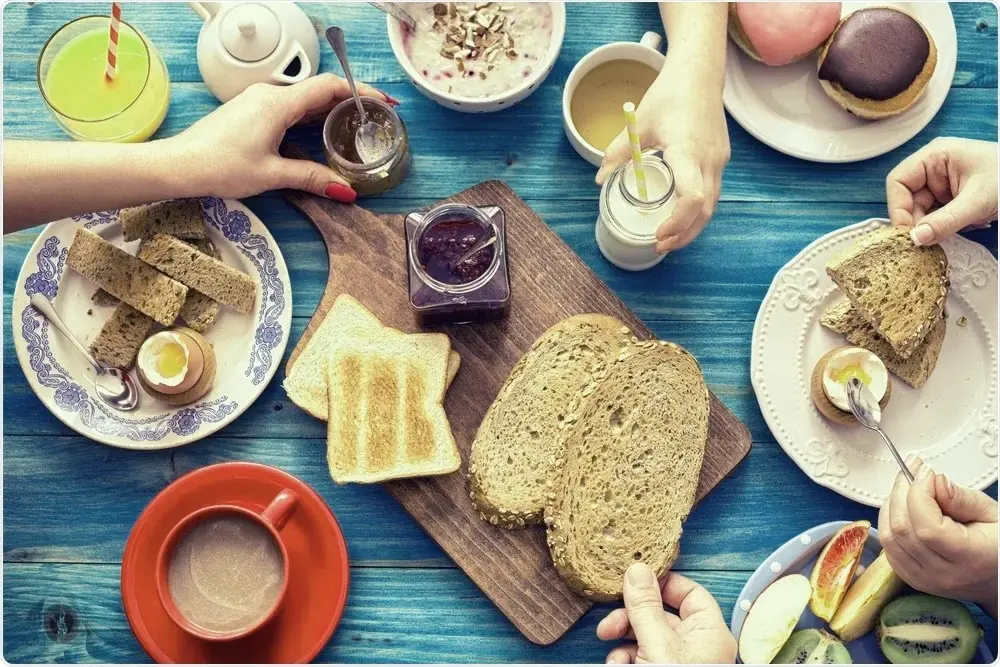Introduction: Style Meets Science in Your Fruit Bowl
Cancer prevention doesn’t always look like high-tech medicine or complex treatments. Sometimes, it’s as simple as what sits in your grocery cart. Imagine your fruit bowl not just as a burst of color on the kitchen counter, but as a silent arsenal each piece carrying compounds designed to guard your cells.
Antioxidants are the quiet defenders. They neutralize free radicals, those unstable molecules that damage DNA and fuel chronic disease. While our bodies naturally produce antioxidants, we live in a world where pollution, stress, and processed foods create more free radicals than our system can handle. That’s where diet steps in.
In this article, we’ll spotlight five antioxidant-rich fruits blueberries, pomegranates, grapes, strawberries, and oranges that science suggests may lower cancer risk. Not through vague “superfood” hype, but through actual, peer-reviewed research. And, just as important, we’ll show you how to make them a seamless, stylish part of your daily routine.
1. Blueberries – The Tiny Powerhouses
Walk into any trendy health café and you’ll likely spot blueberries scattered across smoothie bowls. Their popularity isn’t just about aesthetics. Blueberries are loaded with anthocyanins, the compounds behind their deep indigo shade. These antioxidants are believed to reduce oxidative stress and inflammation two processes closely tied to cancer development.
The Research
- A study in the Journal of Agricultural and Food Chemistry found that blueberry extracts slowed the growth of breast cancer cells in lab models.
- Another trial from the University of Michigan suggested blueberries may influence genes linked to fat storage and inflammation, both cancer risk factors.
Nutritional Snapshot
- 1 cup blueberries = 80 calories, 24% of daily Vitamin C, 36% of Vitamin K.
- Low glycemic index, making them friendly for blood sugar control.
Stylish Ways to Enjoy
- Blend into protein smoothies post-gym.
- Freeze overnight for a crunchy, sorbet-like snack.
- Mix with basil and lemon for an upscale fruit salad.
Blueberries aren’t just food—they’re fashion for your plate: understated, versatile, and always in season.
2. Pomegranates – The Jewel Fruit
There’s something ceremonial about cracking open a pomegranate. Its ruby-red arils glisten like gemstones, hiding potent compounds called ellagitannins and punicalagins. These antioxidants are studied for their ability to slow cancer cell proliferation and reduce inflammation in tissues.
The Research
- NIH studiessuggest pomegranate juice may inhibit prostate cancer cell growth.
- Early human trials found daily pomegranate extract slowed rising PSA levels (a marker of prostate cancer progression).
Nutritional Snapshot
- 1 pomegranate = 7g fiber, 30% of daily Vitamin C.
- Rich in polyphenols, some of which are converted by gut bacteria into urolithins—compounds linked to anti-inflammatory effects.
Stylish Ways to Enjoy
- Sprinkle arils over roasted Brussels sprouts for a luxe dinner side.
- Infuse sparkling water with pomegranate juice for a festive, alcohol-free cocktail.
- Stir into yogurt with pistachios for a Middle Eastern twist.
Eating a pomegranate feels like cracking open a treasure chest—every bite is both indulgence and protection.
3. Grapes – Small Fruit, Big Impact
Red and purple grapesare more than picnic staples. They’re packed with resveratrol, a compound famous for its “French paradox” connection (wine drinkers and lower heart disease rates). But resveratrol isn’t just about heart health—it’s being studied for its anti-cancer properties too.
The Research
- Cancer Research UKnotes that resveratrol can interfere with the way cancer cells spread, particularly in breast and colon cancers.
- Animal studies suggest it may enhance the effects of certain chemotherapy drugs.
Nutritional Snapshot
- 1 cup grapes = 100 calories, 27% daily Vitamin C.
- Contains quercetin, another antioxidant studied for its role in reducing DNA damage.
Stylish Ways to Enjoy
- Roast with thyme and drizzle over soft cheese for an appetizer.
- Freeze and drop into sparkling wine or mocktails for instant glamour.
- Blend into sauces for meats or plant-based mains.
Grapes prove that elegance can come in small packages. They’re the fruit equivalent of a tailored black blazer—simple, timeless, and surprisingly versatile.
4. Strawberries – Sweet with Substance
Strawberries may look playful, but they pack serious nutritional heft. Bursting with ellagic acid, vitamin C, and anthocyanins, they’ve been studied for their ability to inhibit tumor growth and reduce oxidative DNA damage.
The Research
- A Nutrition and Cancer study linked strawberry consumption to slower development of precancerous cells in the esophagus.
- Animal studies suggest strawberries may reduce the risk of oral and colon cancers.
Nutritional Snapshot
- 1 cup strawberries = 50 calories, 149% of daily Vitamin C.
- High fiber, low sugar compared to other fruits.
Stylish Ways to Enjoy
- Slice into a spinach and balsamic salad.
- Puree into chilled gazpacho for a modern dinner party starter.
- Pair with dark chocolate for a dessert that’s both decadent and defensive.
Strawberries are proof that indulgence and prevention don’t have to be opposites. They’re the kind of fruit that makes “eating healthy” feel anything but boring.
5. Oranges – The Everyday Defender
Among exotic fruits and superfood trends, the orange sometimes feels overlooked. But don’t mistake common for ordinary. Oranges are vitamin C bombs one of the most studied antioxidants for cancer prevention.
The Research
- Harvard Healthhighlights studies connecting citrus intake with reduced risk of esophageal and stomach cancers.
- Vitamin C also supports collagen production, which helps maintain healthy tissue structure, making it harder for abnormal cells to spread.
Nutritional Snapshot
- 1 medium orange = 70 calories, 92% daily Vitamin C.
- Contains hesperidin, a flavonoid linked to reduced inflammation.
Stylish Ways to Enjoy
- Use zest in vinaigrettes and marinades for subtle fragrance.
- Layer orange slices into fennel salads for a crisp Mediterranean vibe.
- Blend into smoothies with carrots and ginger for a morning kick.
If blueberries are couture, oranges are the crisp white shirt—classic, indispensable, and always in style.
Quick Reference Table: Antioxidant Superstars
| Fruit | Star Antioxidants | Linked Cancer Protection | Stylish Ways to Enjoy |
|---|---|---|---|
| Blueberries | Anthocyanins | Slows cancer cell growth | Smoothies, yogurt, frozen snack |
| Pomegranates | Ellagitannins | Prostate & breast cancer studies | Salads, sparkling water, marinades |
| Grapes | Resveratrol | Colon & breast cancer pathways | Roasted, chilled, frozen |
| Strawberries | Ellagic acid | Esophageal & colon cancers | Oatmeal, gazpacho, chocolate pairing |
| Oranges | Vitamin C | Stomach & esophageal cancers | Juice, zest, fresh salads |
Final Thoughts: Prevention with Pleasure
Healthy eating doesn’t have to feel like deprivation. It can be an experience an exploration of flavors, textures, and colors that also happen to strengthen your body’s defenses.
Blueberries, pomegranates, grapes, strawberries, and oranges aren’t magic bullets. But they are powerful allies. Layering them into your meals is less about following rigid rules and more about creating rituals: the morning smoothie, the afternoon orange, the dinner salad jeweled with pomegranate.
Cancer prevention is a long game. And it turns out, it can be delicious.
Your next step: choose one of these fruits today and work it into your routine. Think of it as self-care, plated.
FAQs
1. Can eating these fruits cure cancer?
No. These fruits may lower risk and support treatment, but they don’t replace medical care.
2. How many servings of fruit should I eat daily for cancer prevention?
The American Cancer Societyrecommends 2–3 cups of fruits daily as part of a balanced diet.
3. Are frozen fruits as good as fresh?
Yes. Frozen fruits are picked at peak ripeness and often retain as many antioxidants as fresh options.
4. Should I drink fruit juices for antioxidants?
Whole fruits are better—juices often lack fiber and can spike blood sugar. Fresh-squeezed citrus is the best exception.
5. Do organic fruits have more antioxidants?
Some studies suggest slightly higher levels, but the bigger factor is eating enough fruit overall organic or not.
Leave a comment
Your email address will not be published. Required fields are marked *



